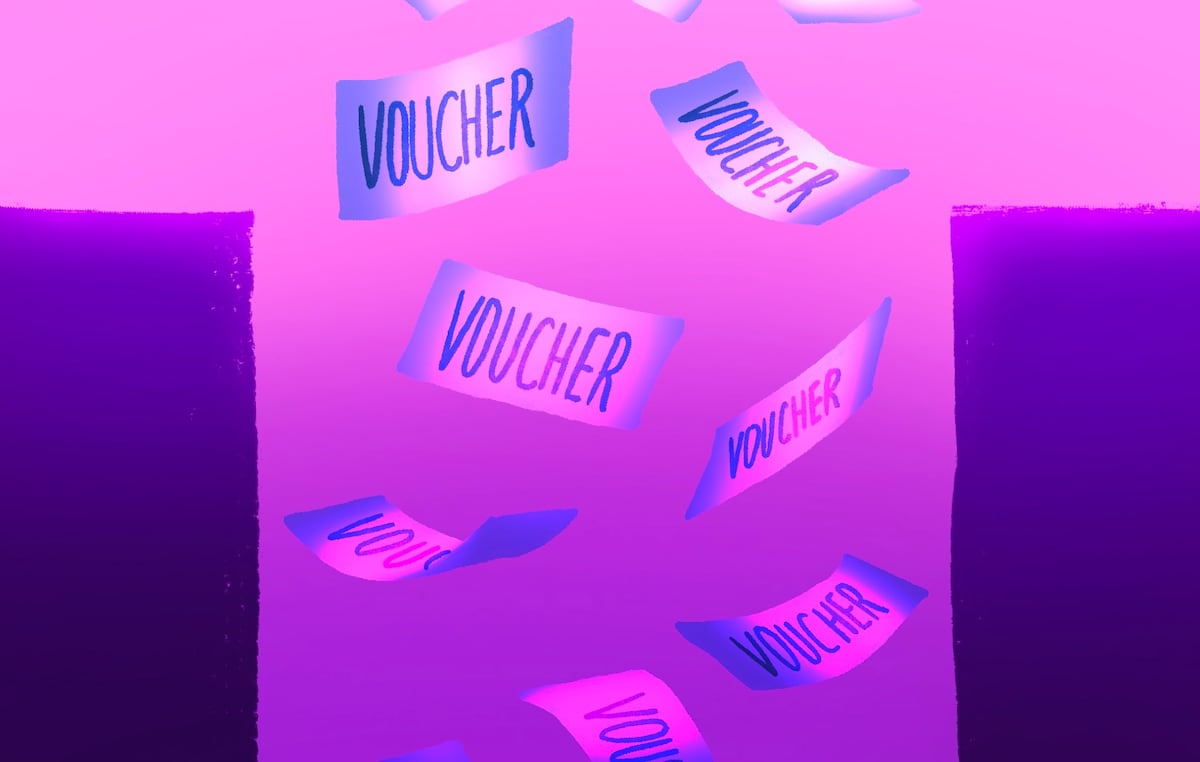The loss of the Great Salt Lake would be an environmental disaster with health and economic effects far beyond Utah’s borders. The state is taking action, but critics say it’s not doing enough.
Three years ago, when Utah’s Great Salt Lake was at its lowest levels, state lawmakers were alarmed enough to try what may be impossible: save the lake from drying up.
If Utah succeeds, it would be the first place in the world to reverse a saline lake’s decline. The salt lake — the largest in the Western Hemisphere — once covered an area larger than Rhode Island. Today, more than half its water is gone. About 800 square miles of lake bed sits exposed, baking in the desert heat, sometimes billowing toxic dust plumes across the state’s urban core.
“Fast crises often get more attention than slow crises,” said Brian Steed, the state’s newly appointed Great Salt Lake commissioner, tasked with developing a strategic plan for the lake. “And in this case, it’s been a slow crisis until 2022, when we realized how dire the situation was.”
That year, Joel Ferry, then a lawmaker in the Utah House of Representatives, called for emergency action, saying the depleted lake was an “environmental nuclear bomb.” A flurry of bills overhauled water laws dating to the pioneer era.
But the measures the state is pursuing will take decades to reap results, if ever. Critics now say the pace and scale of the efforts must greatly increase. What is at stake, they warn, is a public health disaster, the collapse of an ecosystem that supports millions of migrating birds, and a devastating blow to the state’s tourism, skiing, mining and real estate industries.
The effects would reach far beyond Utah. Minerals from the lake are used in America’s beverage cans and in fertilizer for much of the world’s organic fruits and nuts. The lake’s brine shrimp eggs support a global seafood industry. Dust laden with arsenic and other heavy metals could blow across other states. And as climate change intensifies drought across the West, it would also bring accelerated evaporation of the lake.
“They’ve stated they’ve done enough,” Deeda Seed, a campaigner with the Center for Biological Diversity, a nonprofit group suing the state, said of lawmakers. “It’s not working.”
Utah has a conservative Republican governor and supermajority in the statehouse, and most legislators bristle at regulation.
They have been reluctant to constrain the industries that use the most water. Real estate development is a priority in Utah, one of the five fastest-growing states in the U.S. last year. Agriculture, and one of its primary cash crops, alfalfa, is the basis of much of Utah’s rural economy. And the dairy and beef industries rely on alfalfa hay to feed cattle.
Utah policymakers tout $1 billion invested in water conservation in 2022 and 2023. More than a quarter of that was provided by the federal government, mostly from pandemic-era aid. Separately, about $50 million in federal aid meant to restore wetlands and help fund a water-leasing program was paused by the Trump administration. The state recently learned that the money would be released, but it is unclear if there will be any future federal aid for the project.

For now, the lake’s 20-year decline has stabilized, although that has nothing to do with action by lawmakers. A recent year of record snow replenished mountain streams and reservoirs, allowing more water to flow to the Great Salt Lake. It currently is five feet higher than its all-time low, but it will need to rise another five to attain a minimum healthy elevation.
To reach that level in five years, Mr. Steed’s analysis and strategic plan show, all water users in the Great Salt Lake basin would need to cut their consumption by half. The shift would have enormous consequences for the state’s economy.
“I just don’t think we have political support for that,” Mr. Steed said, “nor do I think we would have public support for that kind of drastic action.” He aims instead to reach the goal in 30 years. To do so, the region would need to free up about enough water to support the equivalent of at least a million households annually.
Making real headway could require tens of millions of dollars every year. Gov. Spencer Cox requested $16 million this year for the state to buy water leases for the lake, but lawmakers approved only $1 million. The governor also sought $650,000 to monitor and begin mitigating the lake bed’s dust. He got less than a quarter of that.
“The legislative and executive appetite to get water to the lake has absolutely evaporated,” said Ben Abbott, an ecology professor at Brigham Young University and the lead author of a 2023 report warning that the lake could disappear in as little as five years.
For now, the industries most vital to protecting the lake are largely on the sidelines. Some farmers are benefiting from irrigation upgrades partly financed by the state. But only a handful have signed up to lease water that could feed the lake.
“I certainly don’t want to see the lake dry up and disappear,” said Jason Westover, a farmer who has not joined the leasing effort. “But I also don’t want my industry that I’ve grown up with and love to be impacted just to prolong the inevitable.”
For developers, it’s mostly business as usual. Lawmakers earmarked $40 million in 2022 for a lake trust meant, in part, to help preserve its wetlands. At the same time, they created an Inland Port Authority that has offered state incentives for industrial developers to pave over wetlands in at least four crucial areas.
Brad Wilson, Utah’s Republican former House speaker, who spearheaded many of the policy changes benefiting the Great Salt Lake, is also a prominent real estate developer — a third of the Legislature has ties to the industry. Housing affordability and water supply will remain the state’s top challenges in perpetuity, he said in an interview.
“We should continue to have a strategy to ensure we have enough water for our growth,” Mr. Wilson said, “so our kids and grandkids can live here.”
Refilling the Lake
Water flows to the Great Salt Lake through three rivers that collect snow runoff and scour minerals from the Uinta and Wasatch Mountains. It leaves the lake through evaporation, but the minerals remain, making the lake saltier than the ocean.
While climate change has contributed to extensive water shortages in the Southwest, the Great Salt Lake’s decline is mostly human-caused. Agriculture uses 71 percent of the water that would otherwise flow to the lake, and cities use around 17 percent, according to research compiled by the Great Salt Lake Strike Team, a group of climate scientists, policy analysts and state regulators.
Utah lawmakers put a system in place to incentivize water rights holders — especially farmers — to repair the watershed. They provided subsidies for more efficient irrigation equipment. The legislators also made it possible for the state, nonprofits or private entities to pay farmers for a temporary lease of the resulting surplus water. In theory, the transaction should be a win-win. The farmer has an incentive to use less water without taking a financial hit — potentially even making a bigger profit — while helping the lake recover.
Lawmakers also funded watershed improvements. The National Audubon Society and the Nature Conservancy manage the trust — worth $40 million, most of that already spent — and last year secured 69,000 acre-feet of wetlands for the lake, enough water to support about 140,000 households per year. Nearly a third came from a donation by the Church of Jesus Christ of Latter-day Saints, which has a vast real estate portfolio.
“This is new,” said Marcelle Shoop, who is helping oversee the trust. “We’re all trying to figure out the best way to make these voluntary transactions work, both for the farmer and for the environmental purposes.”
While the state grants for irrigation proved popular among farmers, so far, hardly any have agreed to lease their water rights.
“We’re tired of getting a black eye,” said Trevor Nielson, general manager of the Bear River Canal Company, which holds the rights for about 2,000 farmers. “Yeah, we use the most water, but we’re also the ones who are literally changing how we do business.”
Agriculture is challenging in Utah, an arid state with terrain that varies from hot deserts to cool mountain valleys. About 65 percent of its land is owned by federal agencies. Farmers have found alfalfa hay, and the cattle that feed on it, to be the most sustainable and profitable food products to produce.
But alfalfa has become a scapegoat. Some urban residents have called on Utah lawmakers to buy out alfalfa farmers to “let the water flow,” without scrutinizing their own beef and dairy consumption habits.
Others have suggested encouraging farmers to transition to other crops, like wheat. But farmers are trying to compete in a national and international market, where their alfalfa fetches higher prices than grain.
There’s also a learning curve. For an individual farmer, it would be equivalent to asking a rocket manufacturer to start building cars, said Mr. Ferry, the former legislator and now the state’s natural resources director, as well as a farmer himself. “All those things make it really difficult to flip a switch,” he said.
And while beef and dairy cattle, along with their feed, are the leading cause of water depletions in both the Great Salt Lake basin and the Colorado River, researchers say that alfalfa is one of the few crops that can help watersheds recover. It can go dormant for up to a year if farmers choose to lease their water, and it improves soil health, requiring few, if any, polluting chemicals.
One holdup with water leasing is that Utah has yet to build a comprehensive system that can track leased water and ensure it makes it from the farm to the lake without being diverted by another user. But the state’s biggest hurdle may be earning farmers’ trust.
To stay profitable, farmers now often must expand their footprint, renting land from neighbors. If the state can pay more to lease water than the farmer, it could take that property out of production, bankrupt the farmer and put tractor mechanics, seed wholesalers and irrigation pipe suppliers out of business.
“Our biggest fear is that long-term leasing of water shares may be the death of agriculture,” said Nathan Daugs, a farmer and the manager of the Cache Water District.
Utah’s farmers have long watched farmland that goes out of production get gobbled up by subdivisions, warehouses and strip malls with lawns. “Developers will pay more for water than I can pay,” said Mitch Hancock, a farmer in Box Elder County.
‘Everything We Can’
Advocacy groups, including the Center for Biological Diversity, don’t feel Utah is moving fast enough on saving the Great Salt Lake. Several filed a lawsuit in 2023, arguing the state has a responsibility to ensure the saline lake’s survival. The same concept — called the public trust doctrine — was central to a successful lawsuit involving Mono Lake in California in the 1980s.
The Los Angeles water department had bought and dried all the farmland around Owens Lake, in an arid valley east of the Sierra Nevada, and piped the water more than 200 miles south to support the growing city. The lake dried up, becoming the largest source of human-caused dust pollution in the nation. After Los Angeles began doing the same to Mono Lake, near Yosemite Park, California’s Supreme Court ruled that the city had to curb its water diversions to protect it.
But that suit, brought in a liberal state more open to regulation, involved a single diverter — the water department — not the tens of thousands of water rights holders, often banding together in canal companies, in the farmland and cities of the Great Salt Lake basin. And it has not resulted in Mono Lake, also saline, rising to the mandated level all these decades later. Mono and Owens are a small fraction of the Great Salt Lake’s size.
Utah’s lawmakers know that story. “We’ve done everything we can within the bounds of private property rights,” said Rep. Casey Snider, a Republican state lawmaker. “Once you put people in the courtroom, you send people to their corners and they can’t work together.”
In March, a judge rejected the state’s motion to dismiss the public trust lawsuit, and appeared to rebuke the state for implying it had the right to let the Great Salt Lake dry and fill it in if it so chose. But she also denied the plaintiffs’ request that the state restrict upstream water rights until the lake refills.
While industry-friendly, Utah’s lawmakers have acted against some businesses considered harmful to the lake.
They have blocked mineral companies from siphoning away more lake water to harvest lithium, which is in demand for electric vehicle batteries. Regulators have cracked down on US Magnesium — the country’s only domestic source of the mineral — refusing to allow the company more access to the receding lake. They also denied an application to build a massive landfill on the shore that would have potentially accepted toxic coal ash from coal-fired power plants in other states.
Even so, lawmakers continue to encourage development that takes a toll on the state’s natural resources, including water. Among several major projects, they have spent more than $1 billion moving the state prison to the lake’s southern shore in 2022. There, new roads, power lines and water pipes have since opened a vast swath of land to industrial growth.
Lawmakers created a quasi-government body, the Inland Port Authority, that has pushed development there and in three other counties around the lake with sensitive wetlands — although Ben Hart, the executive director, said he was encouraging builders to embrace less water-intensive and ecologically damaging projects.
Critics say that state funds earmarked to fuel development would be better spent helping the Great Salt Lake refill. “I’d like to see us quit spending money to promote growth that’s already happening faster than we can handle it,” said Rep. Doug Owens, a Democratic state lawmaker.
He introduced a bill this session that would have limited grass in residential construction. A second called for more water-wise drip irrigation in new developments. The first bill never made it to committee. The second died on the House floor.
Source: Utah News










